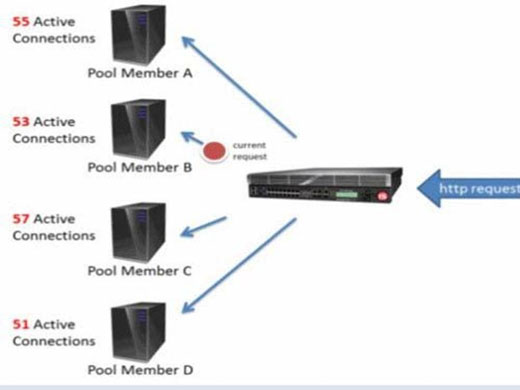If LTM uses the least connections load balancing method, which pool member in the following diagram receives the next request?

If LTM uses the least connections load balancing method, which pool member in the following diagram receives the next request?

In the least connections load balancing method, the next request is directed to the pool member with the fewest current active connections. Among the given pool members, Pool Member D has 51 active connections, which is the lowest number of active connections compared to the others. Therefore, the next request will be directed to Pool Member D.
Answer should be D
I agree. Answer is D.
B is correct but it's a bit of a trick question. If we're doing Least Connections and the current request is going to B, then we know that for whatever reason, D is disqualified. My guess would be Disabled or like zerotfei says, it could be persistence. Either way if B was the Least Connections for the current request, it by definition must also apply for the next one.
Yes, if this is trick question, it's very simple to see. Question is asking about next request not current request. even current is going to B with 53 connection, next connection will go to least number of connection which is D. so this answer should be D.
D is correct
correct answer D
I think the answer being B could be due to the fact that persistence is turned on (Which is what the question is not specified). However taking that factor under account, LTM could choose B again to ensure "continuity" such that server affinity can be maintained.
As per Definition, Least Connection Least Connection load balancing is a dynamic load balancing algorithm where client requests are distributed to the application server with the least number of active connections at the time the client request is received. In cases where application servers have similar specifications, an application server may be overloaded due to longer lived connections; this algorithm takes the active connection load into consideration. Answer should be D.
The current request should go to D, but for some issue it goes to B, so D will have a problem (offline, for example). B is correct.